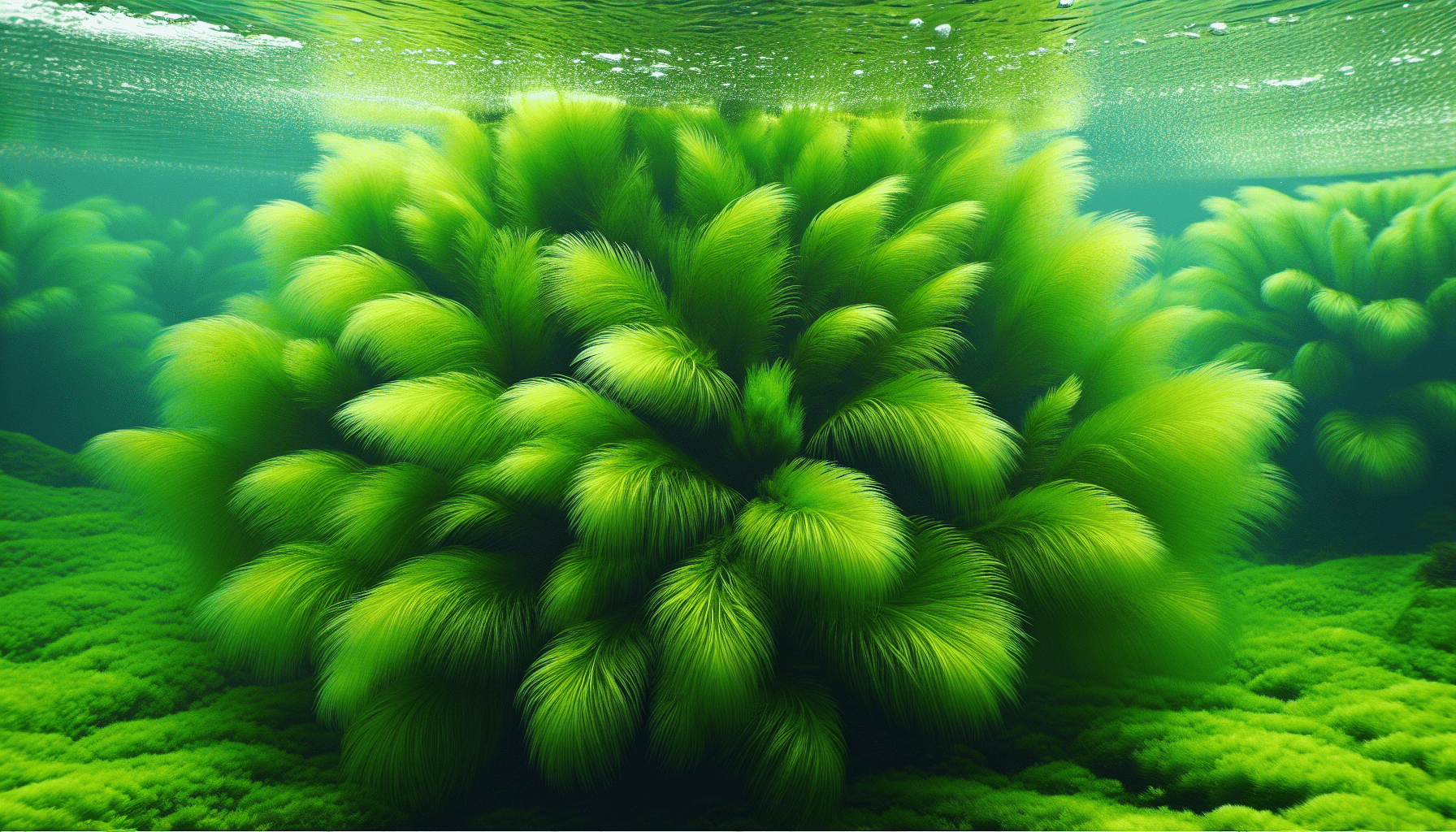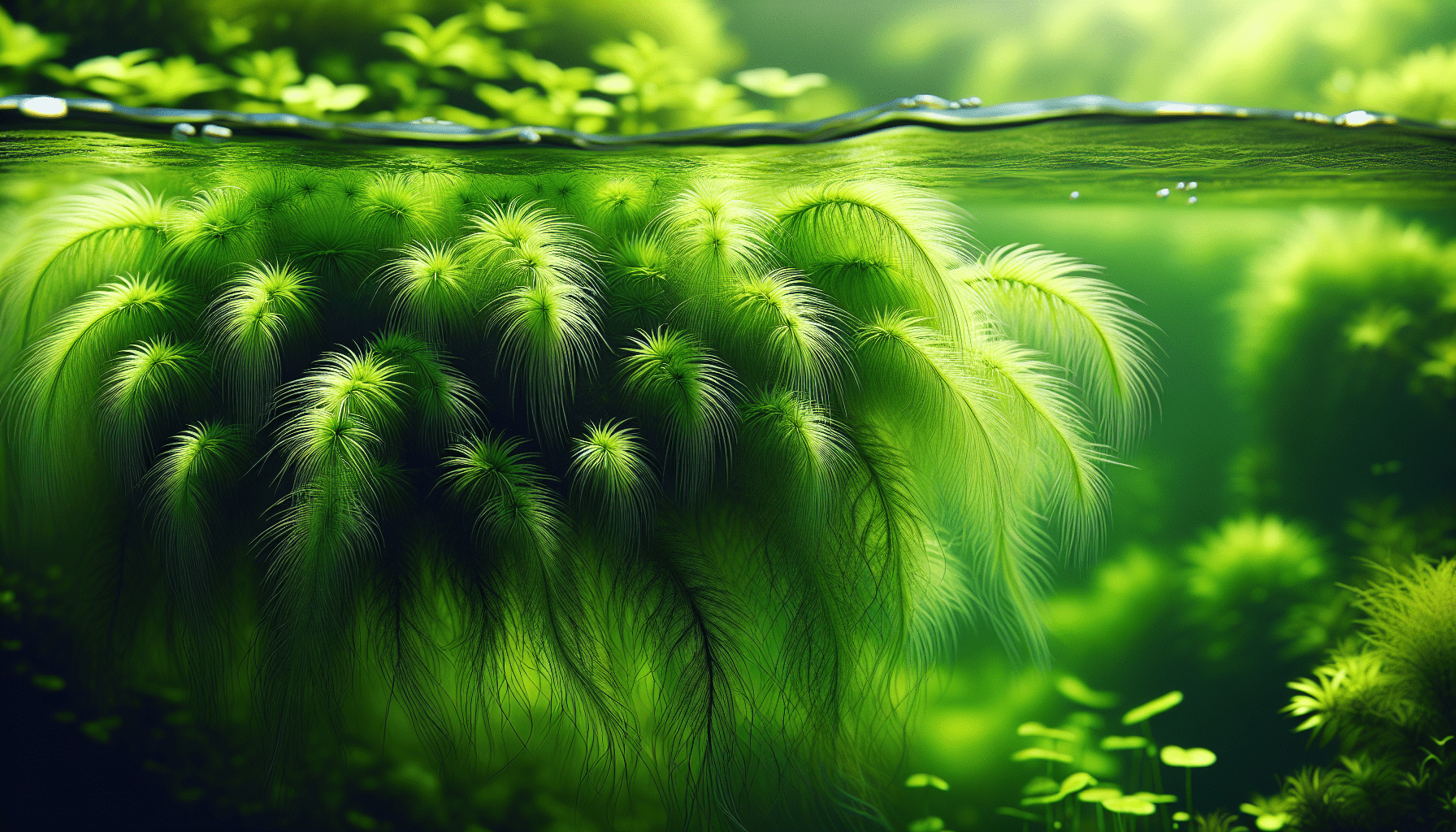As you embark on your exploration of the unique and plentiful world of aquatic plants, you may discover your curiosity piqued by the aquatic plant known as Water Moss. This article strives to satisfy your interest by investigating the distinctive characteristics, growth patterns, and habitat needs of the Water Moss. As a valuable organism in various ecosystems and a popular pick for aquatic hobbyists, understanding this organism can not only fulfill your scientific thirst for knowledge but also provide practical insights in the field of aqua gardening.

The Basic Definition of Water Moss
Water moss, a popular fresh water plant species, is essentially a bryophyte i.e. a non-vascular plant that anchors itself to rocks, logs, or the substrate of a stream, river or lake. It forms a web of mat-like structures much like a green mossy curtain under water, adding an exquisite and vibrant appeal to the aquatic landscape.
Scientific Name and Classification
Water moss goes by the scientific name of Fontinalis. It belongs to the Fontinalaceae family and is a predominant class comprising of nearly 20 species. Water moss falls under the Bryophyte division, signaling its lack of proper roots, stems, and leaves in the plant kingdom.
Traits and Characteristics
Water moss is characterized by its thin, tough, and branched stems and leaves. The leaves usually appear in ascending spirals and often in a uniform fashion. Possessing a great deal of resistance, water mosses can survive in both high and low water levels.
Varieties and Types
The water moss family encompasses several types including Fontinalis antipyretica, commonly known as the common water moss, and Fontinalis dalecarlica, or the feather leaf water moss. Each species carries its unique features in terms of stem length, leaf arrangement, and colors, thus offering intriguing diversity within this one family.
Water Moss’ Natural Habitat
Water moss thrives in a variety of habitats around the world.
General Distribution Around The World
Water moss is globally distributed, with a presence in all continents except Antarctica. They are more commonly found in temperate climates but can also adapt to a range of varying conditions.
Specific Water Conditions
Water moss predominantly grows in fresh water bodies, including fast-flowing streams, serene ponds, and larger bodies like lakes and rivers. It prefers waters that have higher concentrations of carbonates and bicarbonates and is often seen near limestone or chalk river beds.
Climate and Seasonal Tolerance
Water moss showcases remarkable tolerance to seasonal changes. Thriving in both shaded and sun-exposed areas, water moss displays its strength and adaptability as it can exist in both cold and hot climates.
The Life Cycle of Water Moss
Much like other bryophytes, the life cycle of water moss is an intriguing blend of reproductive methods and growth patterns.
Reproduction Methods
Water moss reproduces in a process known as vegetative propagation. A small portion of the parent plant detaches, taking root elsewhere and developing into a new plant. They also rely on spores for long-distance dispersal and propagation.
The Growth from Fragment to Mat
Upon successful propagation, a small fragment of water moss develops into a sprawling mat over time. The moss anchors itself onto surfaces using primitive structures called rhizoids, thus forming a dense green mat that can cover extensive areas.
Lifespan and Longevity
Water moss has surprisingly long longevity, with some species known to live for many years.

Value of Water Moss in Aquatic Ecosystem
Water moss plays an integral role in healthy aquatic ecosystems.
Roles in Water Quality Improvement
Water moss absorbs pollutants and trapped sediments from the water body, thus playing a vital role in improving water quality. It also contributes to oxygenation of water bodies.
Contribution to Biodiversity and Ecosystem Stability
By offering food and refuge to small aquatic creatures, water moss fosters biodiversity and promotes ecosystem stability. It also creates an environment conducive to the growth of other plants which can further benefit the ecosystem.
Function as Food Source and Shelter for Aquatic Creatures
Water moss serves as both a food source and shelter for numerous aquatic creatures. Small organisms, including insects, crustaceans, and fish, not only find food within its dense mat network but also use it as their breeding ground.
Water Moss and Human Uses
Water moss has many uses that go beyond its beauty in natural aquatic landscapes.
Common Use in Aquascaping and Aquarium Decoration
Water moss, with its lush green mats, makes a great addition to aquascapes and aquariums. It adds a natural and visually pleasing element to these artificial environments and provides various benefits to their inhabitants.
Application in Water Treatment and Bioindicator
Water moss has been used effectively in water treatment applications to remove heavy metals and other pollutants from water bodies. It also serves as a bioindicator to gauge the health and defilement of bodies of water.
Historical and Cultural Featured Uses
Historically, water moss has been used in several indigenous cultures for its supposed medicinal properties, to treat conditions like wounds and burns.
Growing Your Own Water Moss
For those who wish to cultivate their own water moss, there are several considerations to make.
Preparation and Selection of Suitable Moss
Choosing the right type of water moss for your environment is important. Consider the conditions of your tank or pond and pick a variety that would thrive best.
Water, Light, and Nutrient Requirements
Water moss requires specific water conditions for optimal growth. As a rule, neutral to alkaline pH levels, moderate lighting conditions and nutrient-rich waters are best for these plants.
Methods to Encourage Growth and Spread
To encourage the growth and spread of water moss, fragmentation (division of the host plant into smaller parts that can be rooted separately) is often used. Regular pruning also helps keep the moss healthy and promotes further growth.
Common Problems and Solutions
One common problem with growing water moss in an aquarium or pond is that if unchecked, it can become invasive.
Issues in Maintaining a Healthy Moss
Water moss can become unsightly if it becomes infested with algae. Regular pruning, cleaning, and inspection can prevent this outcome.
Overgrowth and Control Measures
Water moss can overrun an aquarium or pond quickly. Regular pruning and keeping track of the moss’s spread can control this overgrowth.
Dealing with Diseases and Pests
Water moss can be affected by certain diseases or infestations. Immediate removal of the affected plants and proper treatment can keep the rest of your plants safe.
Benefits and Downsides of Having Water Moss in Aquarium
Water moss offers many benefits when used in aquariums.
Aesthetic and Design Advantages
Water moss adds a natural aesthetic element with its lush green beauty. It can provide a covering for less attractive parts of your aquarium, like filters or water intake tubes.
Benefits to Overall Aquarium Health
Water moss helps in oxygenation of water and maintenance of an ideal water chemistry within the aquarium. This improves the overall health and well-being of all inhabitants.
Potential Drawbacks and How to Manage Them
While water moss can be quite beneficial, a potential drawback could be its quick spread. Regular cleaning and pruning can manage this issue effectively.
The Future of Water Moss
There is a promising future in store for water moss with ongoing research and expanded understanding of its properties.
Innovative Uses and Emerging Research
New potential uses of water moss are being explored, amongst which include its use in waste water treatment as a bioindicator.
Potential Threats and Conservation
Trends like over-harvesting, pollution, changing weather patterns could put the survival of water moss at stake. Therefore, conservation measures are crucial.
Effects of Climate Change
Climate change can impact the growth and spread of water moss, especially in terms of temperature and water chemistry variations.
Summary of Essential Water Moss Facts
In summary, water moss is an intriguing part of our aquatic ecosystems and presents as valuable in both a natural and artificial environment.
Key Takeaways of Water Moss
Water moss serves as a natural water filter, enhances biodiversity, and adds a touch of natural beauty to any aquatic environment in which it grows.
Important Aspects You Need to Remember
Growing moss requires specific pH, nutrient, and light conditions. Regular care, including pest control and pruning, can keep your water moss healthy and beautiful.
Application of Knowledge for Hobbyists
With an understanding of its lifecycle, care requirements, potential problems, and solutions, amateur botanists or aquarium hobbyists can leverage the many benefits of including water moss in their setups.
Water moss is indeed an excellent supplement for those wanting a natural, beautiful, and ecologically rewarding element in their aquatic systems.